A look at the rugged countryside I traveled around during my recent trip to the mountains of central Honduras.
I’ve heard it said forever that going on a mission trip to a third-world country can radically change your life view. It did. I witnessed how my long-time friend Gayle Davidson, whom I’ve known since high school in Denver and then at York College, serves the needs of the poor at her Clinica de Esperanza (Clinic of Hope) in the mountains of central Honduras in Santa Ana.
Another York College mutual friend, Michelle Ford, and I had talked about visiting Gayle’s ministry for years, and this February, we were finally able to make the trip. Gayle had a packed itinerary for our 10 days, and it was an eye-opening experience to see the struggles and hardships of the Hondurans she assists.
Upon arriving at the Palmerola Airport northeast of the capital, Tegucigalpa, Gayle picked us up, and we made the trip back to her clinic in about three and a half hours. The traffic is horrendous, and everyone drives aggressively without the aid of traffic signals.
Thankfully, Gayle is pretty street-savvy driving her 4-wheel-drive Toyota FJ Cruiser. She pointed out that there aren’t many women who drive in Honduras except for the occasional motorbike. She’s had some harrowing and dangerous incidents while driving and always avoids driving at night. Driving is not for the faint-hearted.
I learned firsthand why Gayle’s friend Maria, who made us a traditional Honduran meal of handmade tortillas and Pupusas after we arrived, called her “an angel of God.” Gayle has a broad definition of what it means to offer healthcare—building houses and chicken coops, traveling to isolated areas with a mobile clinic, and finding sick folks up in the hills who cannot travel to a clinic. In addition she has a finely tuned radar for how to help those in need.
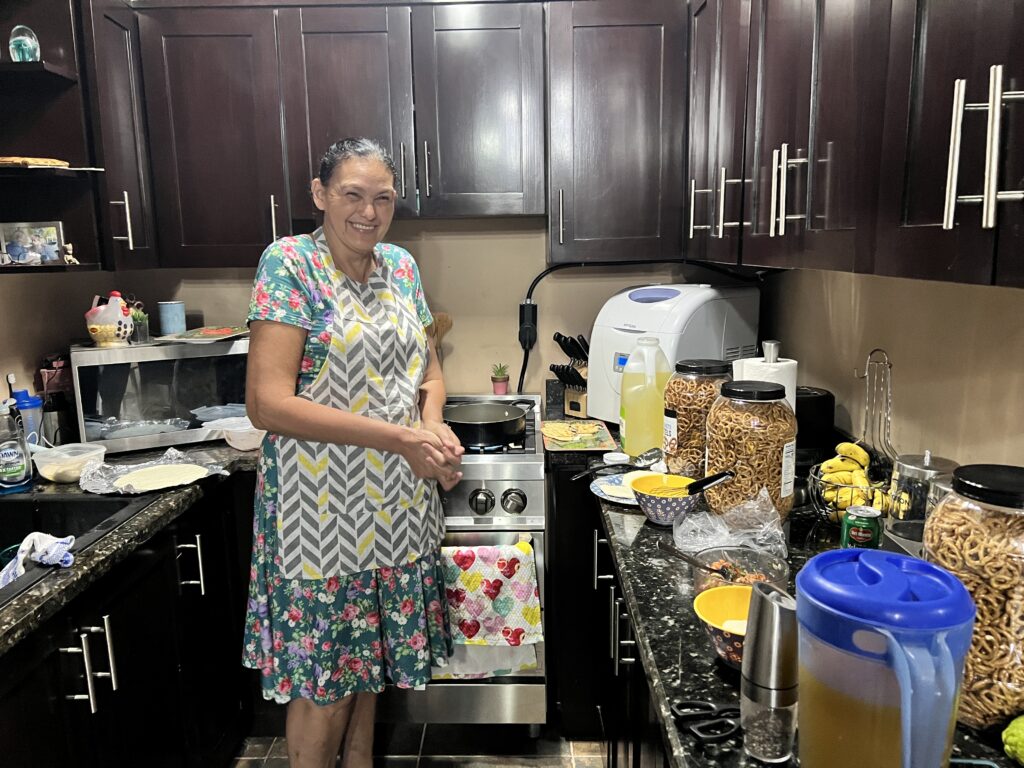
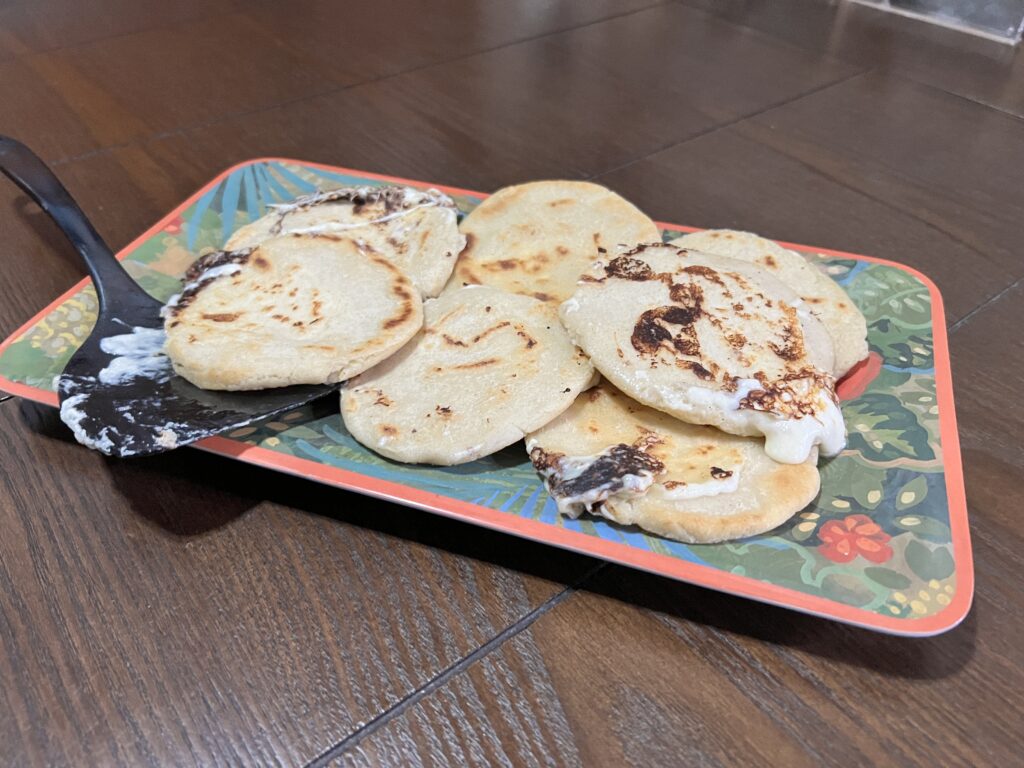
This is Gayle’s friend Maria, who cooked a traditional Honduran meal for us and these tasty cream-filled Pupusas. Marie explained to us that one of the reasons she calls Gayle “an angel of God” is that Gayle recognized her daughter was having a congestive heart failure incident and was able to get her to a hospital in time to save her life.
Gayle, a nurse practitioner, has been coming to Honduras for over twenty years to work with Torch Missions, which is run through the Inter-American Restoration Corporation. After retiring 10 years ago, she now stays in Honduras for about nine months out of the year, running her clinic and spearheading multiple projects helping the impoverished.
Her clinic is located on a compound of about five acres where Torch Missions also runs summer camps for church work groups. The compound has dorm rooms, a large cafeteria, a church, a concrete soccer field, and open grassy areas for the hundreds of kids and adults who come to help every year.
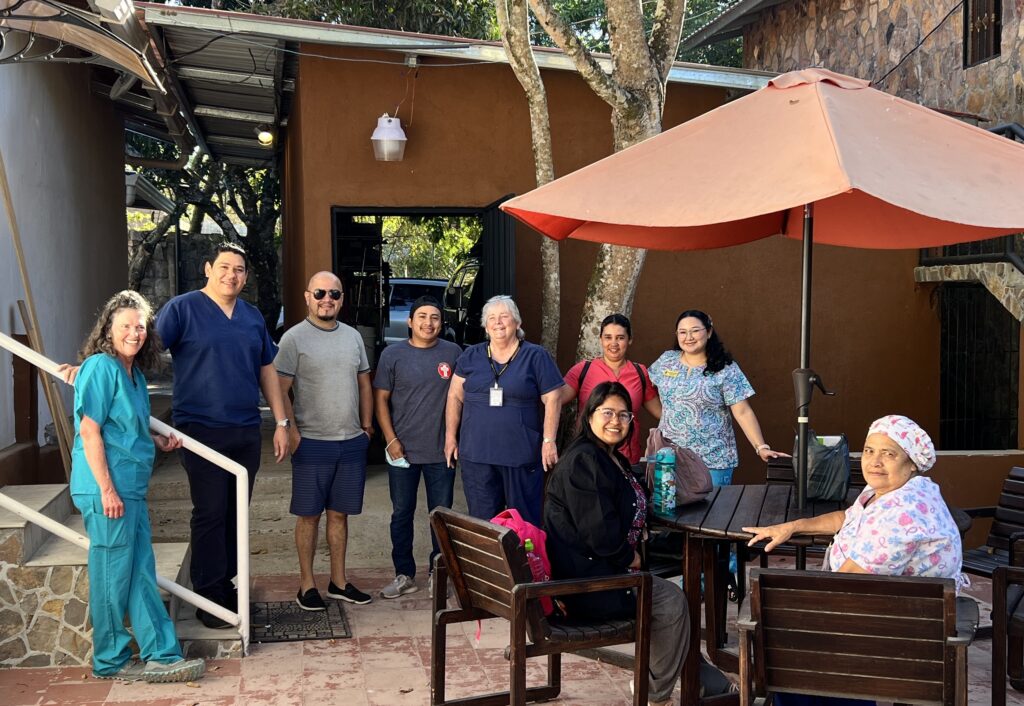

Pictured in the clinic courtyard with Michelle on the left are some of the staff: Doctor Jimmy, Cristian (translator); Joel (triage;) Gayle, Eva (nurse), and Beatriz (dentist); seated is Carolina (pharmacist); and Veronike (maintenance). The picture on the right is of the grounds where the dormitories and cafeteria are located.
Like most properties in Honduras, it’s completely fenced in and can be entered only through metal electronic gates. Michelle and I stayed in a modern apartment above Gayle’s quarters, which had air conditioning, purified water, two bathrooms, and a kitchen.
Unfortunately, the Hondurans we visited do not have access to the most basic needs, such as clean running water and adequate food. On our first day there, we prepared 50 food bags, filling them with rice, beans, flour, coffee, sugar, and pasta. We distributed these each day while out working, along with a Bible.

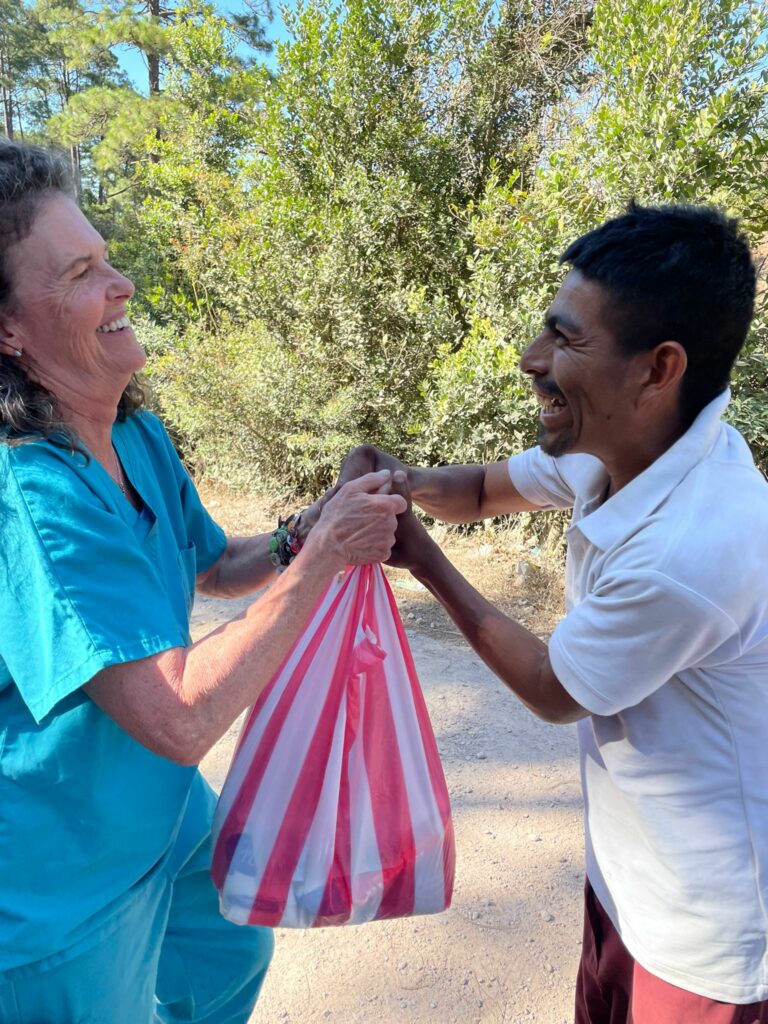
It was a joy giving away the food bags filled with rice, flour, pasta, and other staples we had prepared.
The Clinic of Hope is free and provides basic health care and pharmaceuticals. Most recently, she was able to provide dental care with the addition of a new Honduran dentist, Beatriz Carranza. She started her practice the week we arrived, and without any advertising, she had patients lined up waiting. It truly is a place of hope for the overwhelming number of poor in the mountains where it’s located. On average, they see about 30 patients a day.
Gayle conducts her eldercare work every other week after a full day at the clinic. She has a Honduran doctor (Jimmy) who works in the clinic, and he came with us to see two patients up in the hills. The trip to see them was rugged, traveling on narrow, rutted, and rocky trails. We picked up a local man named Carlos to guide us to the two patients we were visiting. Carlos owns what they call a Pulperias in the neighborhood, a sort of local convenience store that usually runs out of homes.
The first stop was to visit a man named Jorge, who was suffering from some pulmonary problem and was on oxygen. He wasn’t very old but was unable to work anymore, so his wife and daughter were trying to make ends meet. Doc Jimmy and Gayle examined him and evaluated the meds he was taking, but his situation didn’t seem too good. Before leaving, we prayed over him and left him a food bag.

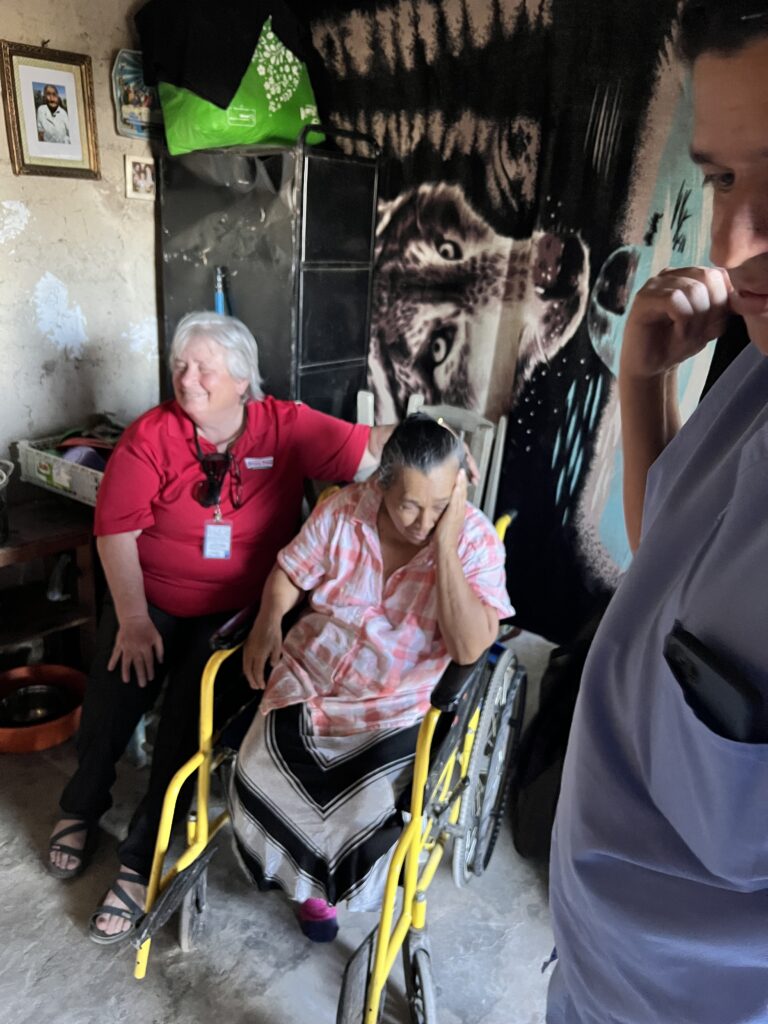
Jorge, on the left, and Santos, on the right, appreciated the medical help they received from Michelle, Gayle, and Doc Jimmy. Michelle is a nurse, so she assisted Gayle and Doc Jimmy with patients during our time there.
The next woman we visited was Santos who was living in a one-room adobe divided by a blanket with a woodburning stove inside. She was elderly, diabetic, and had had one leg amputated. She was sitting in her open doorway in a useless wheelchair. The path up to her house was steep and rocky and not even close to being accessible for her condition. They asked her if she had a glaucometer, and she finally dug one out, which was broken and obviously unused. Her only water was in used large plastic Clorox jugs.
Jimmy and Gayle will follow up with both of these patients and try to get them more help. According to Gayle, diabetes is the number one disease in Honduras due to their poor diets and inability to treat it properly.
A few months ago, Gayle was helping a family build a chicken coop, and a 14-year-old boy, Selvin Hernandez, approached her and begged her to come see where he lived. What she saw inspired her to begin planning for the next Torch house (a typical Torch house is 18′ long and 16′ wide and built with a wooden floor, one window, and a door that locks). She found his family of ten living in a small adobe hovel with an attached rag-tag lean-to that housed their wood-burning adobe stove. There was one electric bulb, no running water, and one room for 10 people to sleep in.
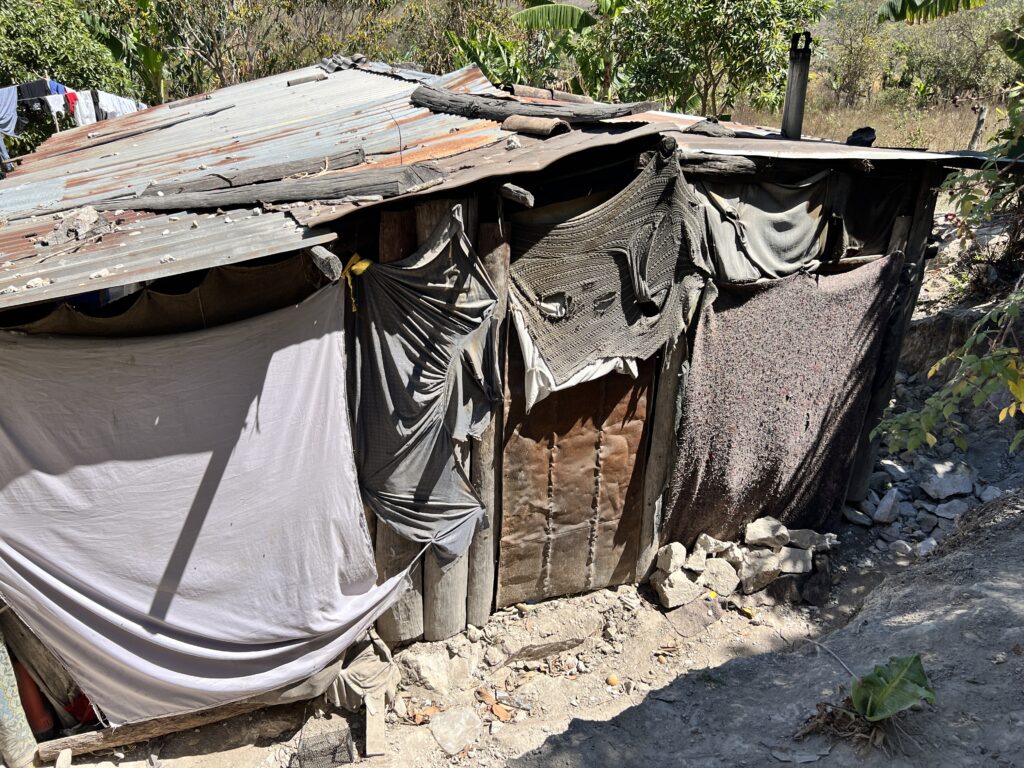
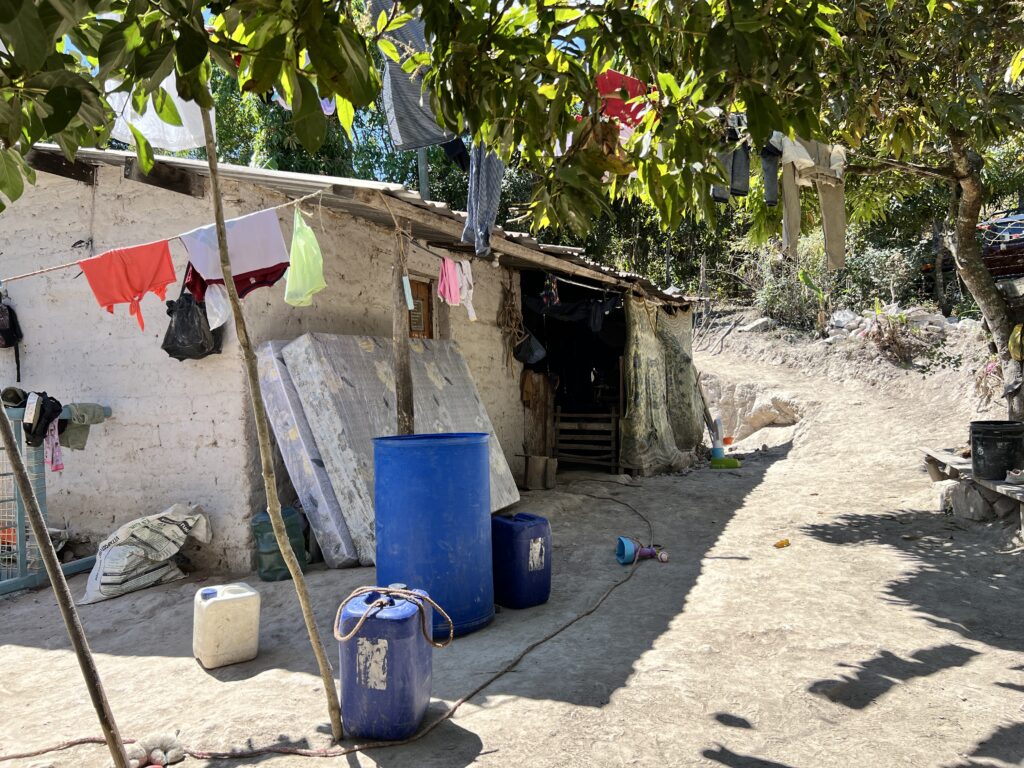
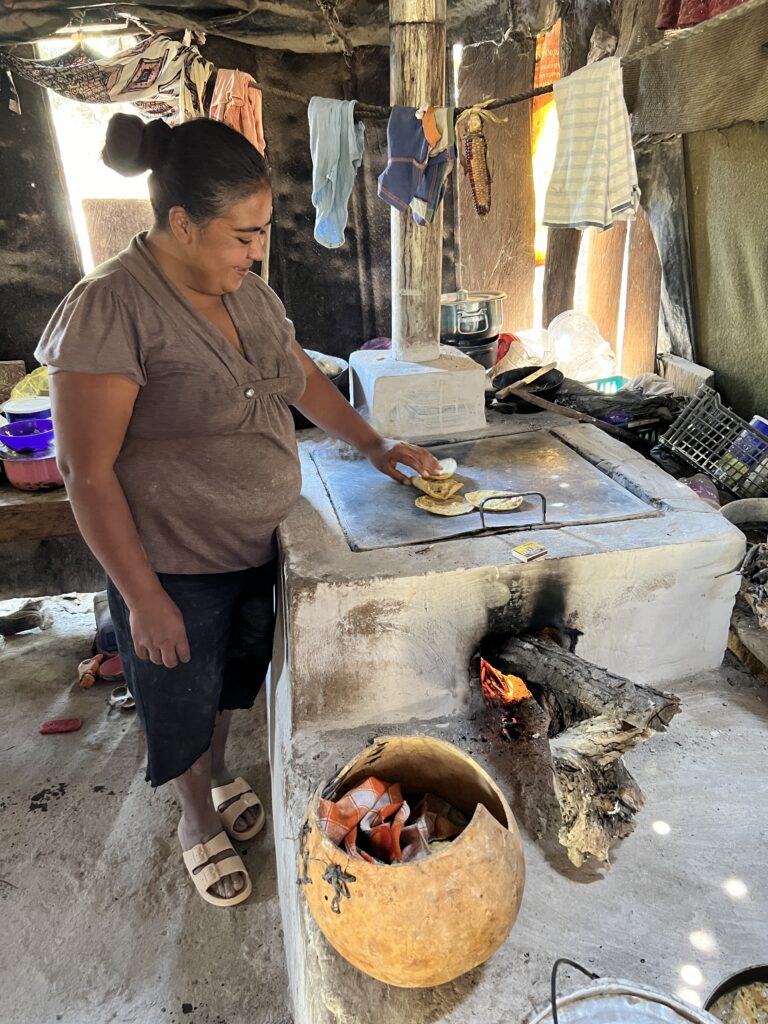
The picture on the left is the lean-to that housed the family’s adobe stove, where the mother, Francisca, was fixing the family tortillas while we were working. The mattresses leaning against the adobe were newly purchased by Gayle to be put in the new house, and the blue barrel will be used underneath the gutter downspout to collect rainwater.
What happened next was a life changer for the Hernandez family. Michelle and I were fortunate enough to witness this transformation and the family’s emotional response when the new house was finished. I didn’t swing any hammers like Michelle and Gayle, but I spent those precious hours with the kids, helping them enjoy peeling loads of stickers and trying to learn some Spanish in the process!
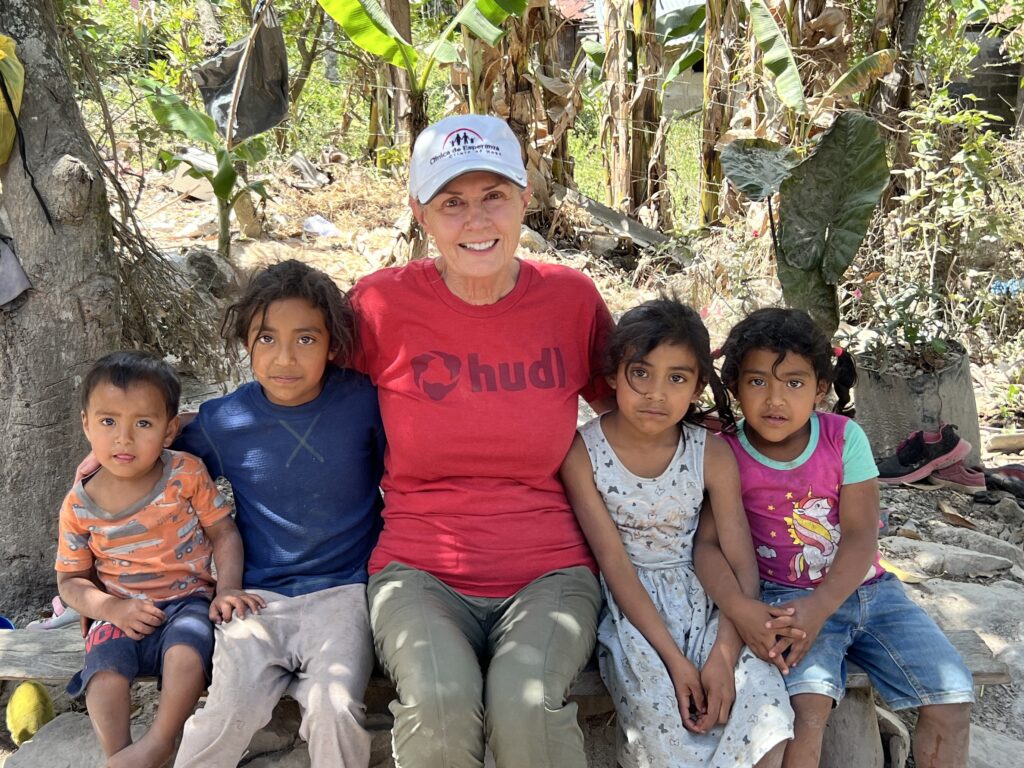
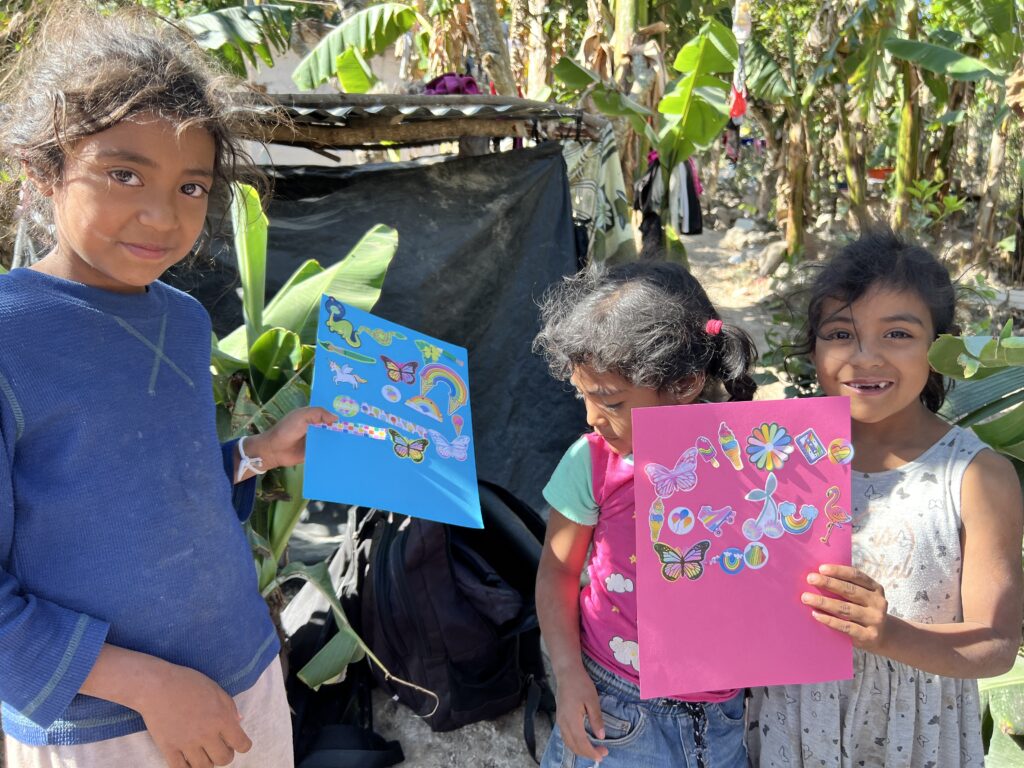
Here I am pictured with these kiddos I had so much fun with: From left to right are Jaison, age 2; Fany, age 8; Iris, age 6; and Merary, age 4. Gayle made a copy of this picture and brought it with her when they returned. She put it on the wall of the new addition!


The boy who made it all happen by getting Gayle’s attention, 14-year-old Selvin, and the water purifiers Gayle delivered on her second trip to their place.
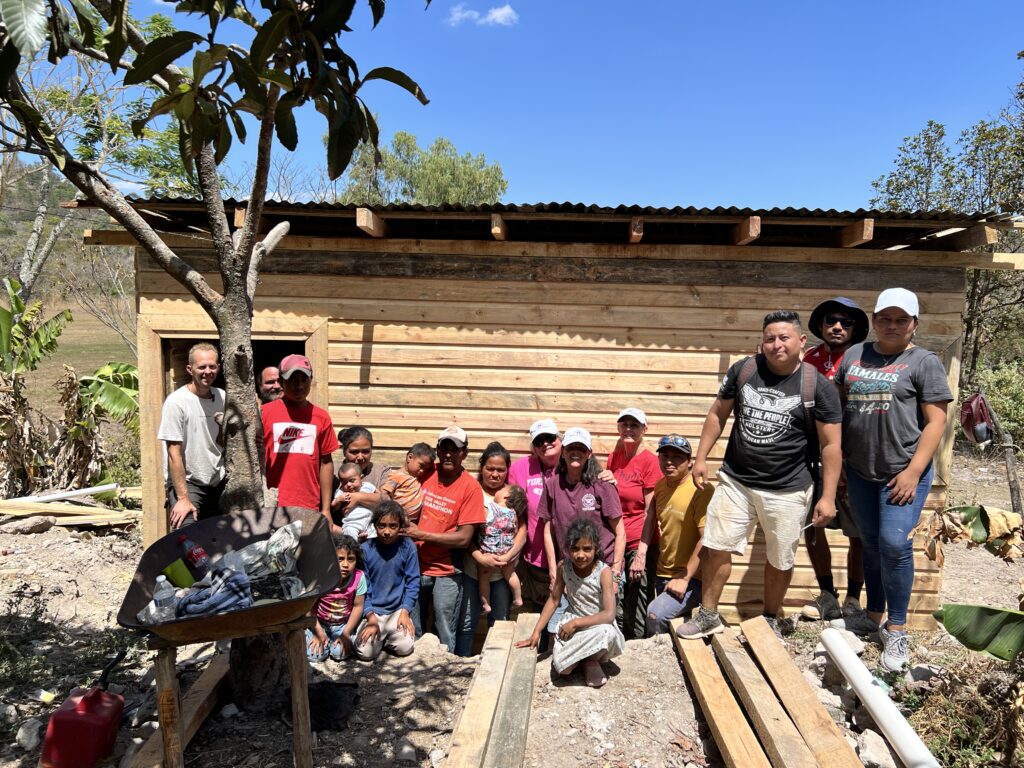
It’s a happy day for the Hernadez family and everyone who helped. Before building a house like this, Gayle takes care of much preparation —going through government red tape to obtain the proper permits, logistics of delivering the supplies to a remote area, and making sure she has an experienced crew to build the house and can pay them in cash (Lempiras) that day.
Just last week, Gayle and the crew returned to finish the project. They had the family tear down the lean-to and move the smoky oven outside. They built another Torch house attached to the adobe one and poured a concrete floor. The house is designed so the roof slopes, and a rain gutter is attached and spills into a large plastic barrel to collect the rain for fresh water to use.


Gayle and the crew built the addition with a concrete floor. This was necessary because, during the rainy season, water would flow right through the lean-to. They also built a retaining wall to guard against further flooding. Gayle has named this project the Joshua House from Joshua 24:15! Before leaving, she measured the kids’ feet by drawing around them for future shoes. Parasites are a huge problem, and going barefoot in the dirt is not helpful.
“Building these starter houses is a real leg up for these families. It helps them concentrate on meeting their other needs and not always having to spend their resources fixing their house,” said Mark Connely, who is an experienced Torch house builder and runs another mission under IRC called The Honduras Project.
There are more stories to share, so next week, I’ll share about the mobile clinic and our heart-wrenching trip to a maternity ward in a hospital in Tegucigalpa.

































